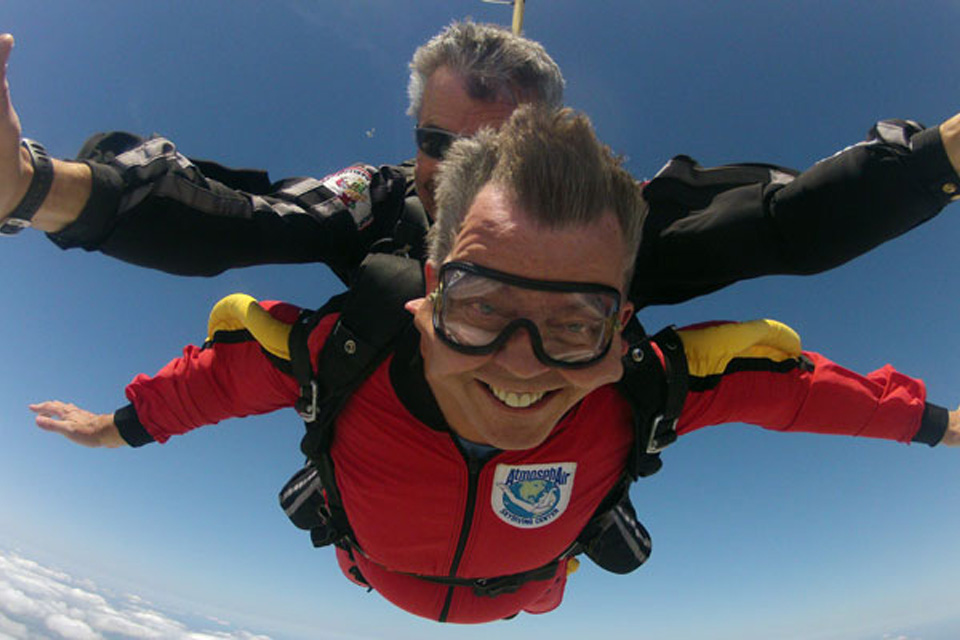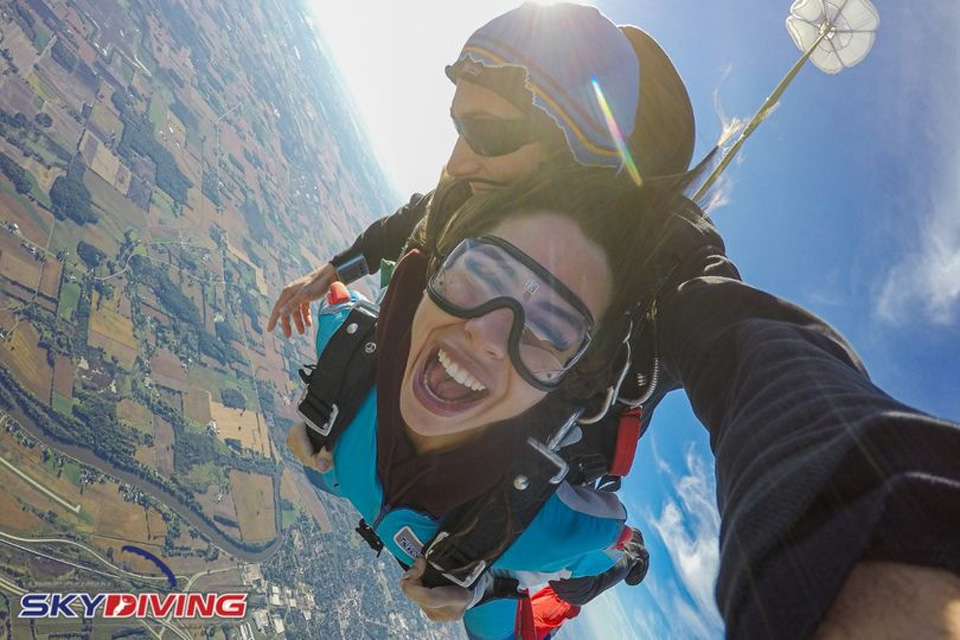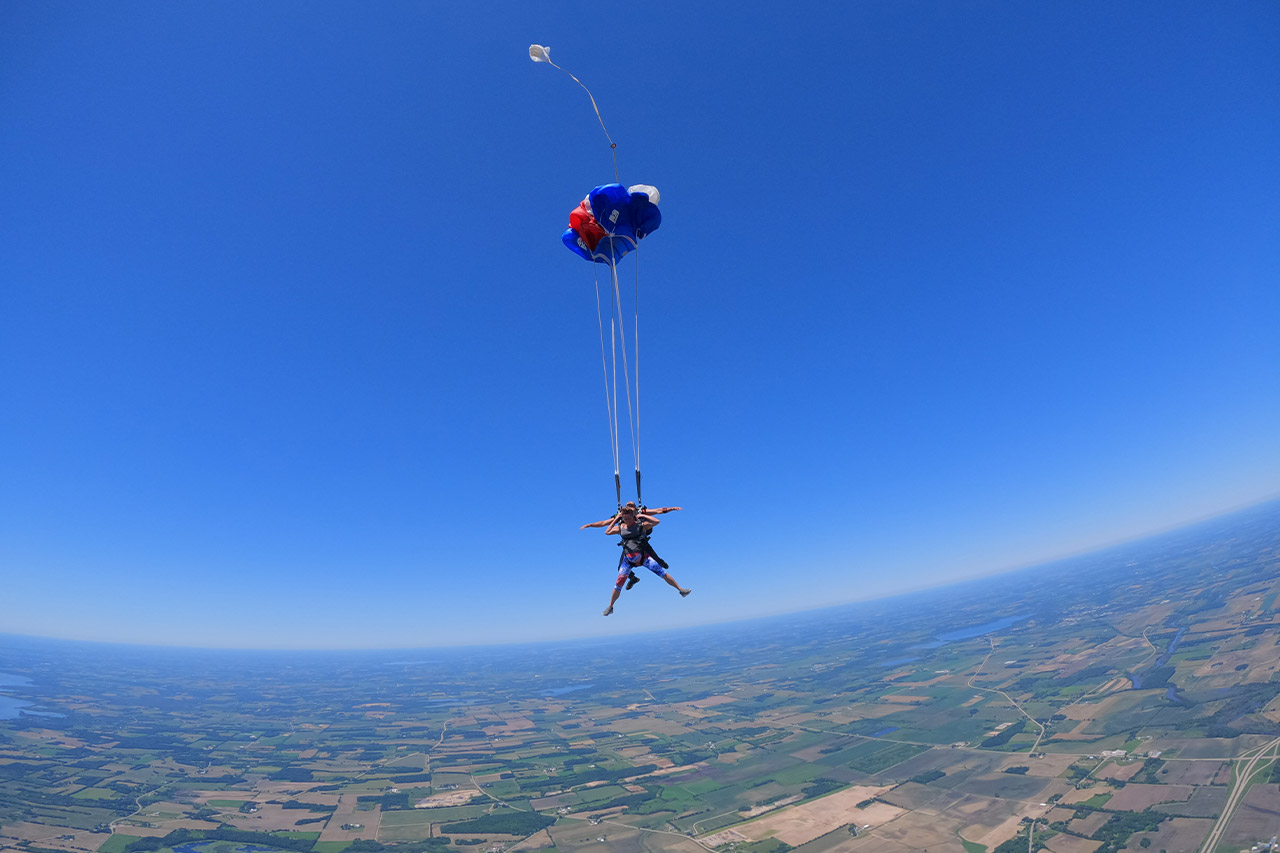What’s a Skydiving AAD & Why It Matters
Skydiving Safety
Posted by: Wisconsin Skydiving Center 2 years ago
Skydiving has come a long way since the days of (essentially uncontrollable) round parachutes! As a community, we are always looking for ways to improve functionality and safety in our sport. One of the most impressive innovations is the skydiving Automatic Activation Device! Yep, that’s right … we have automatic parachutes … no big deal. Actually, it’s a huge deal. Read on to figure out what a skydiving AAD is exactly and why it is important!

What is a Skydiving AAD?
What is an AAD in skydiving? The acronym AAD stands for Automatic Activation Device. It is a microprocessor computer (no bigger than your finger) that is tucked within the skydiving container (i.e. the backpack-looking thing that skydivers wear). This system was designed as a back-up safety system, responsible for automatically deploying a skydiver’s reserve parachute in the event that the skydiver is unable to do so.
Skydiving Emergency Procedures
All skydiving students, licensed skydivers, and skydiving instructors are highly trained to perform emergency procedures in the event of a skydiving emergency. While parachute malfunctions are rare, it is important for all skydivers to be thoroughly trained to handle the situation should it arise.
The emergency procedures for skydiving involve cutting away the faulty main parachute and deploying the back-up reserve parachute. This is done by locating the “cutaway” handle, found on the front of the skydiving container, and grasping it firmly while locating the “reserve” pillow handle. In a sequence, the skydiver will pull the cutaway handle to release the malfunctioning parachute and then pull the reserve handle to deploy the back-up parachute.
Most skydiving equipment also includes a reserve static line (RSL), which is an attachment between the main parachute and the pilot chute of the reserve parachute. In cases where the skydiver is unable to locate or pull their reserve handle, the RSL will aid in initiating the reserve parachute deployment once the main parachute is released.
In the very unlikely chance that a skydiver cannot complete their emergency procedures or is unable to deploy their main parachute at the appropriate altitude, the AAD will fire.
Is an AAD required for skydiving? The United States Parachute Association (USPA) requires that student skydivers wear an AAD, and the Federal Aviation Administration (FAA) requires that AADs be worn by tandem jumpers. While the FAA does not require AADs for licensed skydivers, most dropzones and special skydiving events require them for all jumpers. So, even if your dropzone doesn’t require them, you’ll most likely need one if you want to jump at different dropzones or attend cool skydiving events.

How Does the AAD Work?
The skydiving AAD has three main components – a control unit, a processing unit, and a cutter unit:
- The control unit is a small screen display with a button for powering on and adjusting the AAD firing parameters.
- The processing unit of the AAD uses barometric pressure to measure the jumper’s altitude and descent rate, and senses when a skydiver has reached an unsafe altitude at an unsafe rate of descent.
- This triggers the AAD to send a signal to the cutter unit to cut the reserve closing loop, initiating the reserve parachute deployment sequence.
At what altitude does an AAD deploy? AADs are designed in a variety of modes with their own set parameters for altitude and descent rate that cater to the type of skydiver’s specific needs.
For example, a tandem skydiving AAD has a higher activation altitude to accommodate the larger canopies. A speed AAD has the highest activation speed to cater to experienced skydivers performing high-speed swooping maneuvers at low altitudes. The AADs fire depending on parameters that are set by the gear manufacturer or the licensed skydiver. The activation altitude for tandem AADs is typically around 1,900 feet AGL with a descent rate of around 78 mph.
How Many Times Do Parachutes Fail During Skydiving?
The failure of the main parachute to operate properly or the failure of the parachute to open is called a parachute malfunction. Parachute malfunctions are far less common than you may think. In 2021, one out of 721 skydivers reported using emergency procedures due to a parachute malfunction.
There are two main types of parachute malfunctions: a total malfunction and a partial malfunction. A total malfunction is when the main parachute has either not been activated, OR it is activated but does not deploy. A partial malfunction is when the parachute is deployed but is not landable.
There are many reasons why a parachute would malfunction, most commonly it is due to improper parachute packing. A malfunction could also be due to poor or unstable body position during parachute deployment or faulty equipment. However, parachute malfunctions can still happen through slight human error or simple chance. Either way, if things go wrong, you can trust that your instructor has the proper training to perform the necessary emergency procedures for a successful skydive and that the skydiving AAD will have your back.

AADs at Wisconsin Skydiving Center
The skydiving AAD is a crucial, life-saving component that plays an important safety role for every skydiver’s parachute system. All of our gear at Wisconsin Skydiving Center comes equipped with a skydiving AAD and back-up parachute in the off chance that an unexpected issue or gear malfunction should happen. Whew!
Still feeling unsure about skydiving? Check out our Rise Above Program at Wisconsin Skydiving Center to receive a guided skydiving experience that will allow you to push through your fear of skydiving – or anything else – and experience the ultimate freedom! Blue skies.



